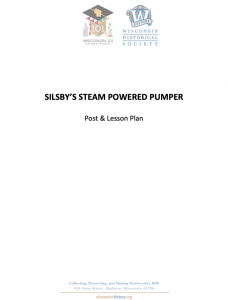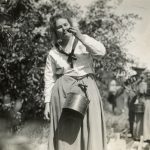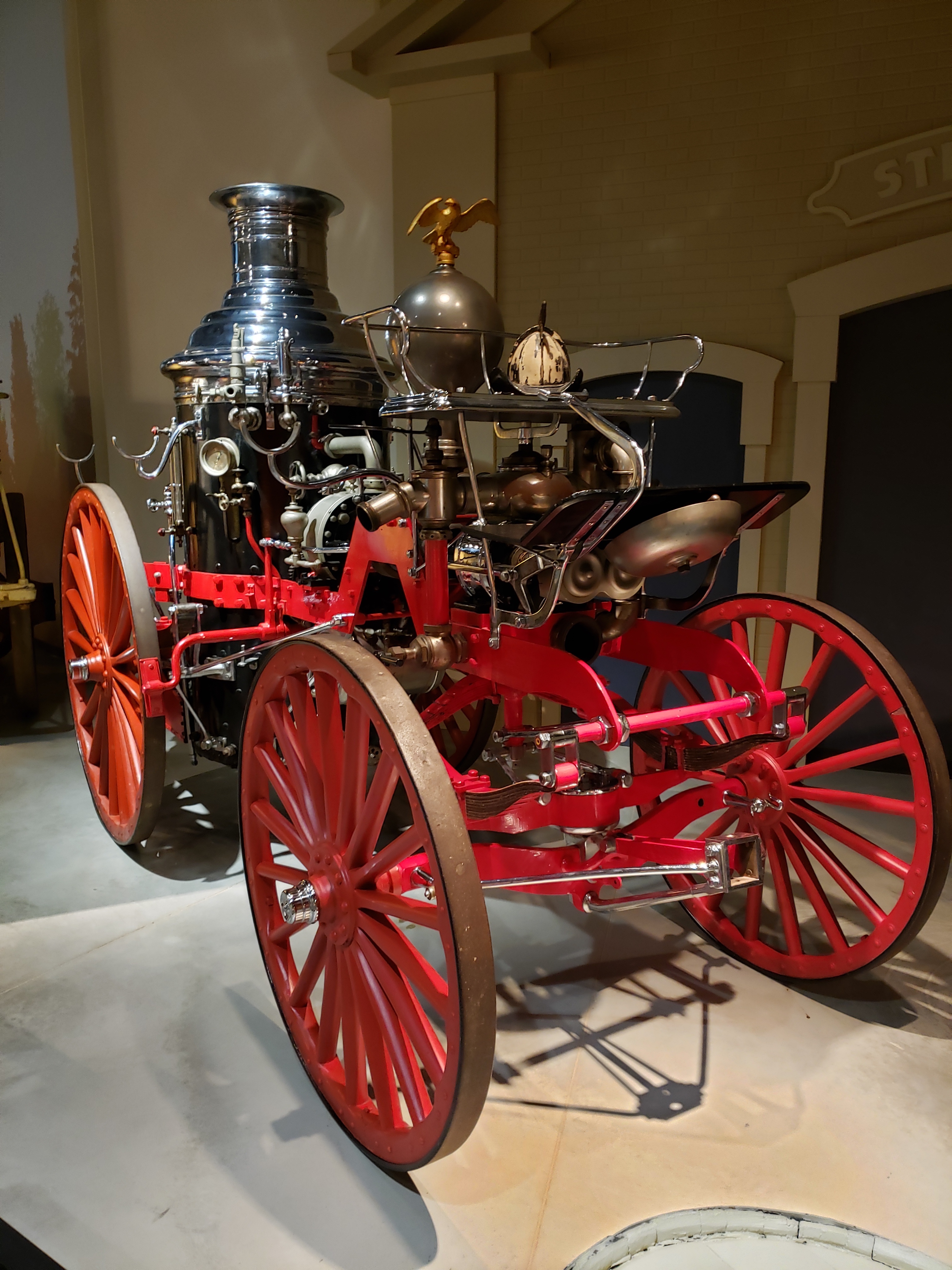 Try to say Silsby’s Steam Powered Pumper five times fast. It’s a tongue twister, isn’t it? Although the name may be a mouthful, the people who used the Pumper did not seem to mind. Why? Well, the Pumper worked.
Try to say Silsby’s Steam Powered Pumper five times fast. It’s a tongue twister, isn’t it? Although the name may be a mouthful, the people who used the Pumper did not seem to mind. Why? Well, the Pumper worked.
Until the Pumper was invented, the modern firefighters that you know now did not exist. Instead, most neighborhoods had bucket brigades.
This method involved a line of people passing buckets of water to each other. The person nearest the fire then threw the full bucket of water over the fire and passed the empty bucket back As you might imagine, this did not work very well. It did, however, buy time for people to save a few things. After bucket brigades, many firefighters were volunteers with a little training. These firefighters did not respond to all fires, but they did use things like hand pump engines. These worked well. However, they required large numbers of men. Because many men were needed, their training was minimal. As time went on, again the technology of firefighters changed.
In the late 1800s, the Silsby Company created the Pumper in New York. It made the lives of firefighters everywhere easier. It was so effective that some places used it until the 1930s. That’s over 50 years!
One of those places was Berlin, Wisconsin. The Pumper was liked because it was powerful. It pumped 600 gallons of water a minute over 200 feet. Most pumps, at the time, were not so powerful. Firefighters in Berlin, for example, used hand pumps before the Pumper. These hand pumps were similar to a squirt gun. A team had to pump a lever, building up pressure. After enough pumps, someone would pull the release and the water would come shooting out. Compared to the Powered Pumper, hand pumps were not as effective. That is why firefighters started using the Powered Pumper.
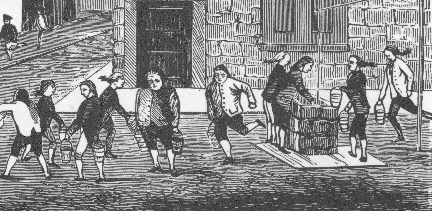
The Steam Powered Pumper was different. Starting on the outside, it was painted bright red with big black wheels. It was hard to miss! The Pumper had four main parts: a coal box, firebox, water tank, and pump. To make it work, someone took coal and placed it in the firebox. Coal in the firebox was heated and made steam. The steam built up pressure. This pressure made the water in the water tank shoot out of the pump.
One drawback of the Powered Pumper was it needed a better trained team to handle the horses and engine. It needed a driver, assistants, three horses and a trusty dalmatian. This may seem like a lot of parts, but the number of people needed for the Pumper was a lot less than bucket brigades. As fire engines advanced, firefighters needed more training.
For example, the Pumper needed regular maintenance. Training took time and money, so it was more effective to keep a small, well-trained team instead of a large amount of semi-trained volunteers. Regardless, with all of these parts to the team, the Pumper would have been quite a sight when racing to a fire.
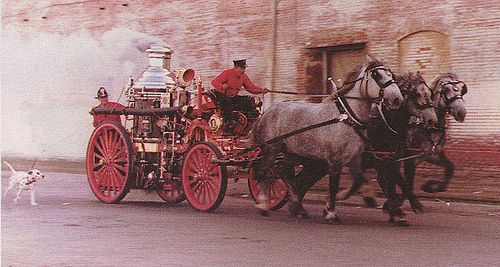
Why do you think they needed a dalmatian? I’ll give you a hint. They were more than just a mascot. Dalmatians would run next horse-drawn fire engines, protecting and calming down the horses. Dalmatians had a soothing effect which made horses calm. As horse-drawn fire engines fell out of use, many firefighters could not part from their trusty teammates. When fire trucks came into use, the dalmatians became more of a mascot. They helped keep up team moral. That is why you may notice a resident Dalmatian in your local fire house.
Just as bucket brigades fell out of use, steam powered pumpers were eventually replaced with gas-powered pump engines. Similarly, with bucket brigades and Pumpers too, the number of firefighters decreased. Training was expensive. It was better for cities to keep a small effective team than a large team. Still, the Silsby’s Steam Powered Pumper was an important invention, helping firefighters put out fires, saving many lives, and bringing the tradition of dalmatians into firefighting.
Written by Michael DeLeers, September 2019.
Download the Silsby’s Steam Powered Pumper Lesson Plan & Post

Return to Wade House Mini Tour
SOURCES
Arthur E. Cote, editor-in-chief. Fundamentals Of Fire Protection. Quincy, Mass.: National Fire Protection Association, 2004.
Landers, Jackson. “In the Early 19th Century, Firefighters Fought Fires … and Each Other.” Smithsonian, 2016, www.smithsonianmag.com/smithsonian-institution/early-19-century-firefighters-fought-fires-each-other-180960391/.
